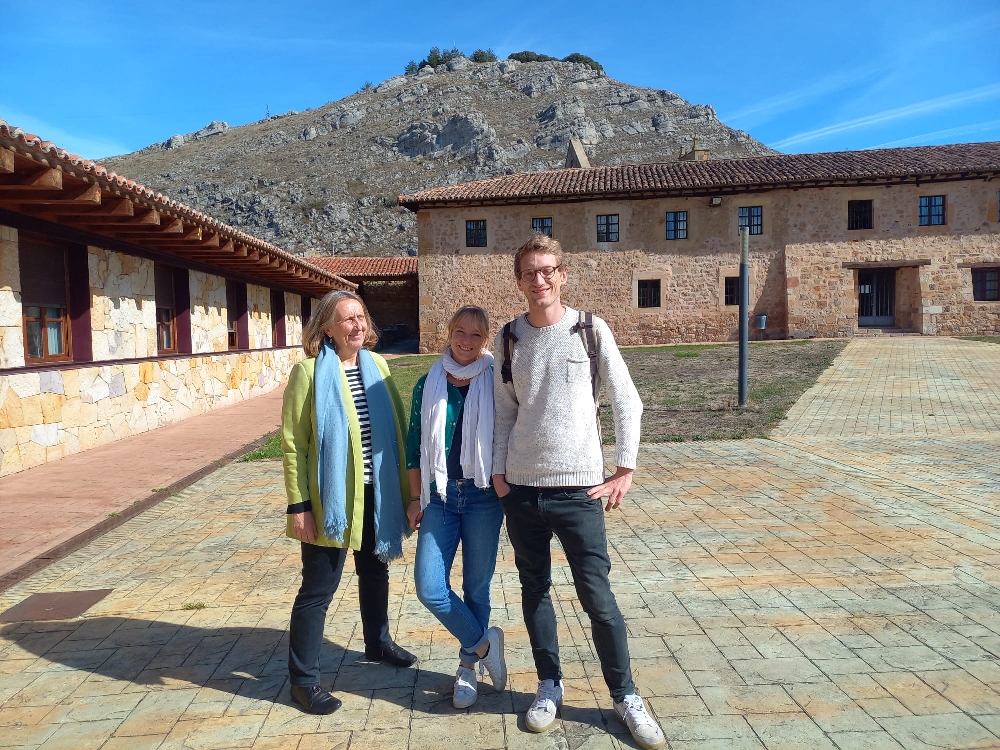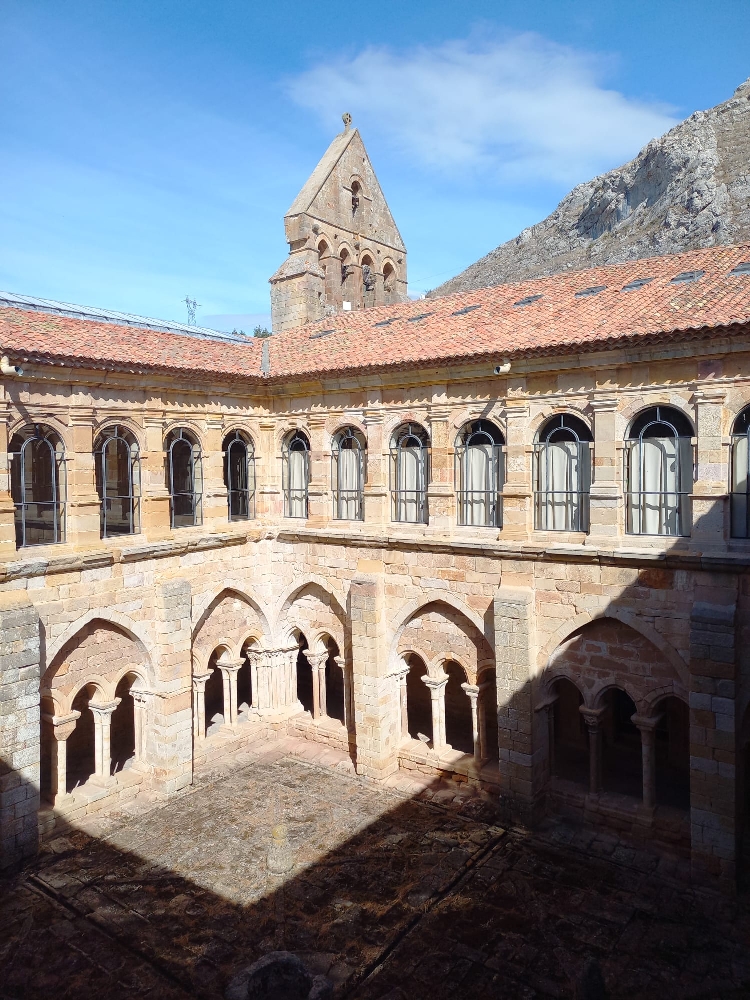26. bis 30 September 2022, IES Santa Maria la Real
Die Schule IES Santa Maria la Real am Fuße der Picos in Nordspanien nimmt seit 22 Jahren an Erasmusprojekten teil und ist Mitglied im Euro School Net 2000. Das Hauptgebäude der Schule ist ein mittelalterliches Kloster, das zugleich ein kulturelles Zentrum für romanische Kirchenkunst ist.


Bei unserem ersten Besuch haben wir folgende Beobachtungsziele abgestimmt:
- Best Practice – digitale Werkzeuge in Lehr- und Lernprozessen
- Implementierung des Erasmusprogramms
- Projektarbeit – MINT und Kunst
- Unterricht in den Fächern Französisch und Spanisch
Im Herbst 2022 stand der Besuch noch sehr im Nachgang zur Corona Pandemie, sodass wir an die gemeinsamen Erfahrungen der Lehrkräfte und der Schüler mit dem Distanzunterricht und der damit erforderlichen Digitalisierung anknüpfen konnten. Somit war die Entwicklung der Ausstattung mit digitalen Geräten sehr ähnlich wie an unserer Schule in Aachen. Diverse Apps wurden im Unterricht eingesetzt, um die Interaktion Schüler-Lehrer oder auch kooperative Lernarrangements zu unterstützen. Die übergeordnete Bildungsbehörde fördert kooperatives und projektorientiertes Lernen unter den Schülern.

Als Lernplattform und Messenger werden von der Schule Teams oder Google und für die Projektarbeit Moodle genutzt.
Die zahlreichen Aktivitäten im Rahmen von Erasmus spielen eine zentrale Rolle im Schulleben und werden an zentraler Stelle im Schulgebäude präsentiert. Ein Erasmus Team ist für das Programm verantwortlich, das zusammen mit den Schulpartnern vorwiegend aus dem Euro School Net gestaltet wird. Im Rahmen eines Interviews konnten wir die sehr positiven Erlebnisse der Schülerinnen und Schüler und ihre Perspektiven auf Europa kennenlernen.
Dr. Schwab
ERASMUS PLUS (JOB-SHADOWING) – AUSTAUSCH NACH AGUILAR DE CAMPOO (SPANIEN)
08.05. – 13. 05.2023
After experiencing significant disruptions in both private and public life over the past school years, we, at St. Leonhard Gymnasium, can finally refocus on larger projects and participate in the Erasmus Plus program. Erasmus supports (inter)national exchange opportunities and promotes cross-school collaboration. As part of the Erasmus Plus project, the first mobility and an integrated job-shadowing took place with the Spanish school IES Santa Maria La Real in Aguilar de Campoo from 08.05. to 13.05.2023 in Aguilar. The exchange involved Class 8b and their homeroom teacher, Mr. Caelars. During our stay, there were three aspects that I paid special attention to for my Job-Shadowing. These were:
1. Outcome: participation – strategies to promote participation: During our stay, I had the opportunity to observe strategies to promote participation.
2. Outcome: Digitization of teaching – Digital organization of learning and teaching as well as data management: Another focus was the digital organization of learning and teaching as well as data management. Here I was able to gain valuable insights.
3. Outcome: Design of lessons – Strategies for involving students in the learning process: Another aspect was the observation of lessons and strategies for involving students in the learning process. Both during our time at the school and in conversations with our Spanish colleagues, I was able to observe and discuss this.
My Outcomes
During our field trips, I had conversations with our students and the Spanish students. They expressed their desire to be able to participate more in school life. As a result, the German students suggested that we create a school podcast in which the students themselves can provide information about current school life. The school podcast format was just introduced at their own school and they would like to see this project expanded. The Spanish students found this idea very successful and wanted to encourage it in their own school as well.
During our stay, I was able to observe that the teachers and students were using Microsoft Teams to share data and communicate with each other. One teacher told me that this usually worked well, but occasionally the servers were overloaded. However, he said, that doesn’t happen too often. I am very familiar with Microsoft Teams, having used it during my clerkship training. I think it offers a great way to facilitate blended project-based learning mobility across schools and countries. You could create a joint team, add all the students and work on a joint project in a video conference. Progress could be uploaded as a team. In doing so, students could independently start video calls with other students and work together on their assignments at agreed-upon times, regardless of their schedules. This requires coordinated joint planning on the part of the supervising teachers, but it promotes cultural exchange immensely, which is why this effort would be well worth it.
In addition, the Spanish school uses IESFacil to enter students‘ grades, record missing lessons, and communicate with all teachers. However, no information is provided about or for the students. This seems to be similar to our own program WebUntis.
During my stay, I remembered one history lesson in particular that I observed, which was characterized by involvement of the students in the learning process. In this lesson, the supervising teacher handed out a series of pictures on the Roman founding legend to the students. Their task was to independently transform this series of pictures into a test for their classmates during the course of the lesson. This gave them the opportunity to incorporate their own performance and creatively design the test. I found this example to be successful in its implementation.
Conclusion
In summary, it can be said that a joint digital project between the schools would make sense, especially to promote connections between the schools and cultures and to advance a common Europe. To achieve this, it is necessary to agree on a common communication and data management tool. Microsoft Teams would be a suitable option for this. It should be further developed in the future.
